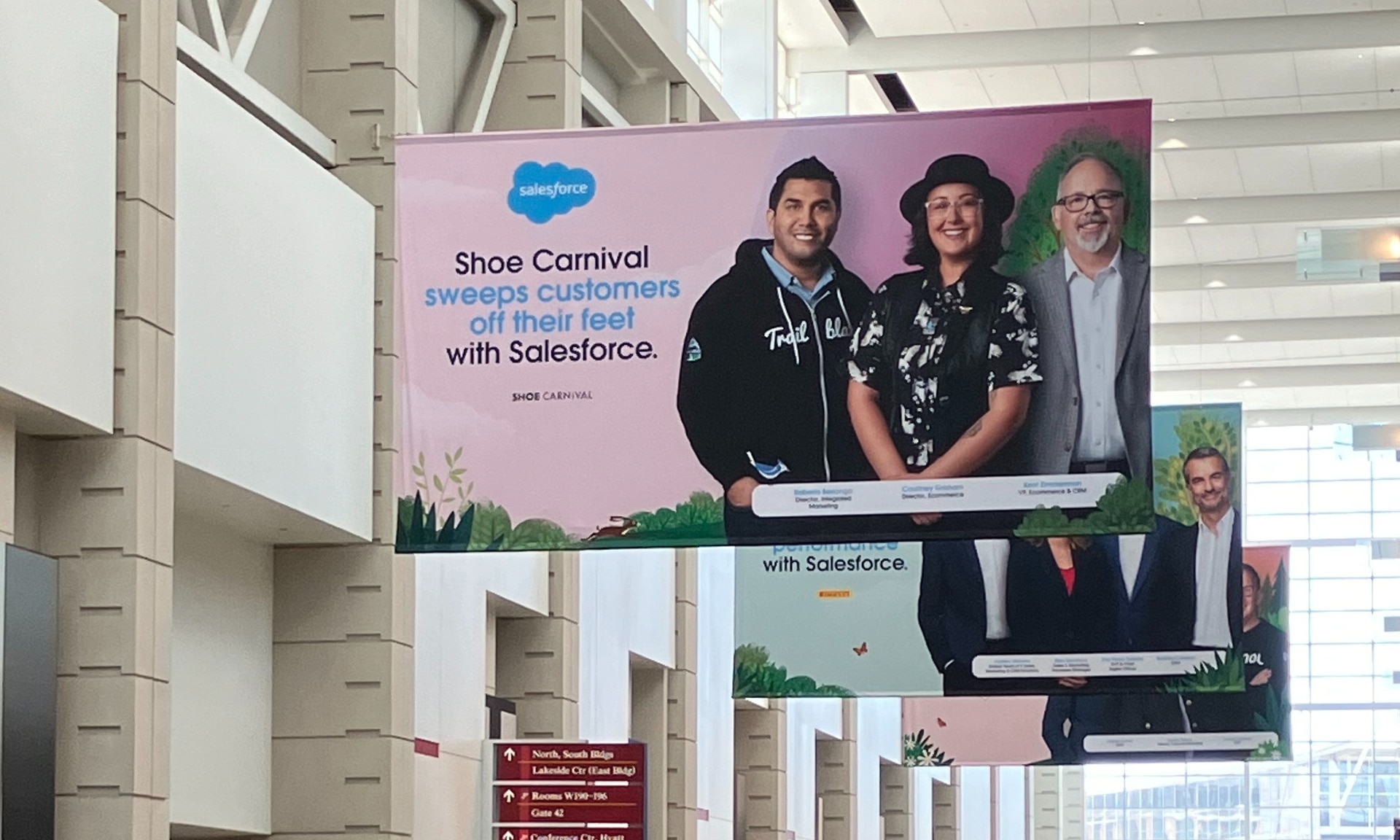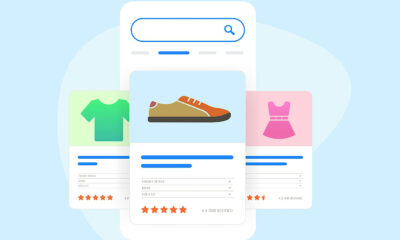MARKETING
A Guide to Franchise SEO

The author’s views are entirely his or her own (excluding the unlikely event of hypnosis) and may not always reflect the views of Moz.
As franchises can have a large number of locations by nature, search marketers are faced with the ever present hurdle of scale. More locations means more content and landing pages to manage, and a much bigger chance of running into technical SEO issues. These challenges can be even more daunting when combined with an older CMS, franchisee-generated content, and tracking issues.
At Go Fish Digital, we’ve been able to work with quite a few franchise businesses and advise on their SEO strategies. Over time, we’ve been able to identify common problems with these campaigns, and ways to solve these issues, the framework for which I’ll cover in this piece.
What is franchise SEO?
Franchise SEO is a set of initiatives to improve the search engine visibility of franchise websites, which are websites that promote an overall brand while at the same time offering localized pages for multiple locations of that brand. Strategies include scaling keyword research, creating localized landing pages, and removing duplicate content.
Broadly, franchise SEOs need to always be thinking about scalable approaches, local page quality, and technical issues that are common on these types of sites. Below I’ll cover some of our favorite approaches when handling a franchise site.
Franchise SEO best practices
Scaling keyword research
To start your franchise SEO campaign, you’ll want to identify and track the keywords that are most valuable to your business. Tracking your core keywords will allow you to monitor a couple of things:
-
Visibility changes for individual keywords
-
Aggregate rankings to see the overall SEO health of your website
The issue that most franchises face is that they offer a wide variety of service offerings across a large number of geographic areas. For instance, a national plumber may provide 20 different types of services (water leaks, sump pumps, etc.) across 50 high priority markets. This can make keyword research extremely difficult, as you’ll want to be sure you’re tracking your site’s visibility across all of these different service/geographic combinations.
For this type of analysis, we love using the tool MergeWords. Once you identify the combinations of services and locations, you can easily plug this information into the tool to ensure that you’re creating queries for every combination.
This process allows you to more easily scale the keyword research process to ensure that there are no gaps in your rank tracking data.
Localize and segment your keyword tracking
With franchises, there is no such thing as a “national” ranking. Even queries with geographic modifiers such as “commercial cleaning” will have inherent local intent. A search for a query like this will bring up results that are specific to your area without you having to specify that information to Google. Tracking your keywords at a “national” level won’t provide you much insight as to how visible you are when real users perform a search.
Most rank tracking solutions will come with some type of location feature that will allow you to monitor a particular keyword in a specific geographic area. Many tools will allow you to get as granular as defining the exact ZIP code of the area that you want to track. We enjoy using tools such as STAT (pictured here) for this type of rank tracking.

This can still be useful even if you’re a business that has customers in a wide geographic area, but don’t have a physical location in each one. For example, a cleaning business might only have a few locations, but serve an entire state. In these situations, it can be beneficial to identify your highest priority/highest populated areas and set up localized keyword tracking for each one.
If you wanted to track all across the state of North Carolina, you could track keywords in geographic areas such as:
-
Charlotte
-
Raleigh
-
Durham
-
Chapel Hill
-
Winston-Salem
Once tracking your geo-specific keywords, you can then utilize keyword segments to monitor how you perform in a specific location. Keyword segments will allow you to drill down to analyze aggregate local rankings. You can do this by creating a segment for all of the queries you’re monitoring for a particular location.
For example, here you can see how a particular site ranks on the first page in Chapel Hill, NC:

Review high priority geographic areas
Now with segmented rank tracking set up, you’ll be in a great position to benchmark where you stand across your different locations. Doing this can help you better analyze the highest priority geographical areas. This can help you better focus your strategy, even if you’re managing a large number of locations.
For example, in our location in Chapel Hill, NC, we can see that 67% of our tracked keywords are ranking on the first page:

However, when we look at visibility in Fairfax, VA, we can see that only 36% of our tracked queries rank in the same positions.

This data allows us to see that we don’t rank as well in Fairfax when compared to Chapel Hill. If Fairfax is a high priority area for us, we might want to focus our efforts specifically on reviews for this market. Maybe our content isn’t as strong here or maybe that landscape is much more competitive. Whatever the case is, keyword segmentation has given us the knowledge of where we need to focus our efforts moving forward.
Create location-based pages
Another critical element of a franchise SEO campaign is to ensure that you have built out location pages for every area that you serve. This will give your site the opportunity to appear for geo-specific queries for your core keywords. As previously mentioned, Google naturally localizes the results in many industries, which means these pages could also appear for general keywords that don’t utilize geographic modifiers (“lawn care services”).
Unfortunately, most franchises heavily underinvest in this area. The vast majority of local landing pages contain fairly generic content that doesn’t add much value for users. Oftentimes, this involves general descriptions of a particular area. Even worse, these pages are notorious for having the same templates with just the location name replaced.
Ideally, your location pages would contain the following elements:
-
Optimized title tags and content for that specific location
-
Customized on-page content for that area
-
The address, phone number, and contact information (if a physical address exists)
-
Structured data markup from the most specific category in the schema.org library
-
Reviews specific to that individual area
-
External links to relevant local resources
For example, the Lawn Love franchise does a really good job of creating local landing pages for each area that they’re active in.

As a result, they rank well for “lawn care service” queries in a large spread of markets such as Philadelphia, Raleigh, and Pittsburgh.
What if you don’t have physical locations in the area you serve?
Even if your brand doesn’t have physical locations in the geographic area you’re targeting, it’s still definitely encouraged to create localized landing pages, as long as you provide services to that specific area. This can be a really useful strategy, especially if you only have a small number of locations but serve a much larger geographic area such as an entire state.
Below you can see the “Locations” page of a social security lawyer based in Pittsburgh, PA. While they only have a single physical location in the city of Pittsburgh, their business is regional and extends beyond the city into other parts of western Pennsylvania and even Ohio.
To improve the reach of their business, they’ve created location-based pages for all of the most popular cities and towns that they serve in these areas.

This gives their SEO the ability to cover a much wider geographic area than they normally would be able to with just a single location.
When performing any multi-location SEO campaign, we recommend one of the first things you do is assess all the major geographic markets that you serve. Next, you should audit your existing landing pages assets to ensure that you have a location page mapped to any high priority area. You can use tools such as CRM data or conversions in Google Analytics to determine what your most important locations are.
However, if you don’t have this information, another way to do it would be by evaluating populations. If we were working with a business in Texas, we could utilize municipality population data in order to determine which landing pages need to be created first based on where the majority of people are located. This provides a data-based way of informing where to focus your content generation strategies.
Create and optimize Google Business Profiles
For any locations where you have a physical address, you’ll want to be sure that you’ve created and claimed a Google Business Profile (GBP). These profiles integrate directly with Google Maps and Google’s local 3-pack results. This means that in order to be eligible to rank in Google’s map packs, you’ll need to have an active GBP that’s been properly verified:

Across all of your physical locations, you’ll want to audit your GBPs to ensure that the following information is accurate:
-
Primary category (most important)
-
Secondary categories (filled out as completely as possible)
-
Name
-
Address
-
Phone number
-
Hours of operation
The most crucial part of this step is ensuring that your primary and secondary categories for each location are filled out as completely as possible. If your business isn’t categorized properly, you could potentially be missing out on local pack visibility for relevant search queries for your franchise. To get a better understanding of how to categorize your GBPs, you can read Miriam Ellis’s excellent guide.
Ensure NAP consistency
Another great step to optimize your local pack rankings is to ensure there’s NAP (name, address, phone number) consistency across all of your physical locations. The more consistent this information is across the web, the more likely you are to appear in the map pack results. Since franchises face the challenge of scale, doing this manually is out of the question. Tools like Moz Local can help automate this process by improving each location’s NAP consistency in the most prominent data aggregators.
E-A-T optimizations
If you’ve already set up location pages but are looking to take their on-page optimizations to the next level, you can look for ways to improve the expertise, authoritativeness, and trustworthiness (E-A-T) of their content.
Google has a responsibility to try to improve the visibility of sites that they feel will provide accurate information to users. For this reason, it needs to factor in how trustworthy a particular source is. While optimizations for E-A-T will be most relevant to sites in the health and finance verticals, multi-location sites can also leverage these concepts to improve their on-page content.
Here are some of our favorite content elements to utilize E-A-T concepts on your franchise location pages:
-
Information about laws and government regulations
-
External links to helpful local resources
-
Facts about a particular geographic area
-
Data points relevant to the local area
-
Profiles and information about specific employees at that location
Going back to the Lawn Love example, on their location pages, they provide users with specific data points about a particular area such as mowing costs, average yard sizes, and how frequently lawns are mowed.

Looking at another industry, the chiropractor franchise The Joint provides biographies of each doctor for each individual location, as well as information such as how many years of experience they have:

On-page optimizations like this may help improve the trustworthiness of your content to both users and search engines. Utilizing original data, linking to trusted government sites, and providing information about your specific location are all potential ways of sending additional trust signals. This type of content helps demonstrate your business’s knowledge of the local market and differentiate your website from competitors that will likely have generic information.
Structured data
You’ll want to be sure that you’re marking up your location based landing pages with structured data. Structured data is simply code that you place on a website to give search engines a better understanding about the context or the intent of that page.
Generally, structured data will be placed on a particular page template, such as your location pages. This makes schema markup a great way to improve the optimization of a website at scale.
One of the best things about schema markup is that, depending on your business, there might already be a schema type that closely describes what your business does. The vast majority of franchises will use some subtype of LocalBusiness structured data to markup individual location pages. While there are too many to list, below you can see some of the most common types of schema for franchise businesses:
You can see that Two Men and a Truck have marked up all of their “Moving” location pages with the MovingCompany structured data type that highlights information such as the name, address, phone number, hours, and reviews.

Which schema you choose will vary greatly depending on the overall topic of your business. Your franchise should definitely be reviewing the schema.org library to see what the most specific type of structured data is for your location pages.
Review duplicate content issues
One of the biggest technical issues with large franchise sites is duplicate content. This is more likely to happen when steps have been taken in order to scale localized content initiatives. If not done properly, this can lead to pages that are too thin to be indexed or that Google has identified as duplicate.
As an example, here you can see a franchise that’s using templated content across a variety of pages:

As a result, Google may choose to ignore these pages and exclude them from the index entirely. If your pages are based on a template with little variation in content, this review is absolutely critical. To find pages this might be impacting, you can perform the following steps:
-
Navigate to Google Search Console
-
Go to the “Coverage” report
-
Select the “Excluded” tab
-
Review both the “Crawled – currently not indexed” and “Discovered – currently not indexed” reports

If you see pages that are built from a template getting flagged in these reports, there is a good chance that it’s due to a duplicate or thin content issue. These can be great pages to prioritize new content creation on as these changes could result in high converting pages getting indexed by Google.
Another method is to use a tool like Siteliner to identify duplicate content at scale. Siteliner crawls through your site and flags any duplicate/similar content that it finds. Pages with high match percentages can be audited and potentially adjusted to be more unique.

Create content that solves user problems
A great long term approach to franchise SEO campaigns is to connect with your customers before they’re ready to make a purchase. An effective way to do this is to identify queries that users would be searching before engaging with your franchise, and then create a content strategy around targeting those topics.
For example, a common reason to go to an auto repair franchise would be when you see the ominous check engine light appear on your car. In this situation, it’s likely that the user would seek to learn more about the issue and even try to fix it themselves before enlisting the help of a service.
The company AutoZone wisely understands this trend, and has created a page that provides information about reasons why the check engine light may appear. As a result, they rank on the first page for the query “check engine light”:

When analyzing the data more closely, AutoZone has clearly been investing in this type of content in recent years. As a result, it’s estimated that they’re generating over 580,000 organic sessions a month to these types of pages:

A particular type of content that I believe franchise owners should be paying attention to is video. This is especially true if your franchise provides some type of service that would be considered DIY. More and more we’re seeing SERPs around DIY queries where the bulk of the first page results are YouTube videos.
If you’re a franchise with existing video assets, it’s worth ensuring that any content you’ve uploaded to YouTube is optimized for relevant keywords. Doing this could provide more visibility through both YouTube and the Google search results, as they’re becoming more and more integrated.
A brand that positioned themselves very well for this trend is Ace Hardware. They’ve built up an extensive catalog of videos that directly integrate their products and teach users how to accomplish different projects. As a result, they often receive an embedded result directly on the SERPs for queries around their core products.

A brief franchise SEO case study
Applying these frameworks can be extremely powerful for franchise businesses, and we’ve seen some strong results when doing so.
For one environmental services client, we were able to identify that they didn’t have localized landing page content that targeted many of their core geographic areas. As a result, they were extremely limited in the number of markets their content was able to appear in.
By reviewing old versions of the site, we were able to create a plan to recreate many localized landing pages that had once existed, and utilize local content best practices. Doing this allowed them to experience a +270% improvement in the number of tracked queries that were ranking on the first page in the span of two years.

Conclusion
When working on franchise SEO, marketers need to be aware of the contextual and technical considerations that apply most to these sites. Franchises need to be aware of the technical issues that come along with multiple locations such as duplicate content, indexation consistency, structured data, and more.
Google is placing a greater emphasis on quality localized content and more brands are starting to invest in these initiatives. By following the steps above, hopefully you’re able to think about your franchise’s search initiatives in a different way, and strengthen the quality of your site.
MARKETING
YouTube Ad Specs, Sizes, and Examples [2024 Update]
![YouTube Ad Specs, Sizes, and Examples [2024 Update] YouTube Ad Specs, Sizes, and Examples](https://articles.entireweb.com/wp-content/uploads/2024/06/YouTube-Ad-Specs-Sizes-and-Examples.jpg)
Introduction
With billions of users each month, YouTube is the world’s second largest search engine and top website for video content. This makes it a great place for advertising. To succeed, advertisers need to follow the correct YouTube ad specifications. These rules help your ad reach more viewers, increasing the chance of gaining new customers and boosting brand awareness.
Types of YouTube Ads
Video Ads
- Description: These play before, during, or after a YouTube video on computers or mobile devices.
- Types:
- In-stream ads: Can be skippable or non-skippable.
- Bumper ads: Non-skippable, short ads that play before, during, or after a video.
Display Ads
- Description: These appear in different spots on YouTube and usually use text or static images.
- Note: YouTube does not support display image ads directly on its app, but these can be targeted to YouTube.com through Google Display Network (GDN).
Companion Banners
- Description: Appears to the right of the YouTube player on desktop.
- Requirement: Must be purchased alongside In-stream ads, Bumper ads, or In-feed ads.
In-feed Ads
- Description: Resemble videos with images, headlines, and text. They link to a public or unlisted YouTube video.
Outstream Ads
- Description: Mobile-only video ads that play outside of YouTube, on websites and apps within the Google video partner network.
Masthead Ads
- Description: Premium, high-visibility banner ads displayed at the top of the YouTube homepage for both desktop and mobile users.
YouTube Ad Specs by Type
Skippable In-stream Video Ads
- Placement: Before, during, or after a YouTube video.
- Resolution:
- Horizontal: 1920 x 1080px
- Vertical: 1080 x 1920px
- Square: 1080 x 1080px
- Aspect Ratio:
- Horizontal: 16:9
- Vertical: 9:16
- Square: 1:1
- Length:
- Awareness: 15-20 seconds
- Consideration: 2-3 minutes
- Action: 15-20 seconds
Non-skippable In-stream Video Ads
- Description: Must be watched completely before the main video.
- Length: 15 seconds (or 20 seconds in certain markets).
- Resolution:
- Horizontal: 1920 x 1080px
- Vertical: 1080 x 1920px
- Square: 1080 x 1080px
- Aspect Ratio:
- Horizontal: 16:9
- Vertical: 9:16
- Square: 1:1
Bumper Ads
- Length: Maximum 6 seconds.
- File Format: MP4, Quicktime, AVI, ASF, Windows Media, or MPEG.
- Resolution:
- Horizontal: 640 x 360px
- Vertical: 480 x 360px
In-feed Ads
- Description: Show alongside YouTube content, like search results or the Home feed.
- Resolution:
- Horizontal: 1920 x 1080px
- Vertical: 1080 x 1920px
- Square: 1080 x 1080px
- Aspect Ratio:
- Horizontal: 16:9
- Square: 1:1
- Length:
- Awareness: 15-20 seconds
- Consideration: 2-3 minutes
- Headline/Description:
- Headline: Up to 2 lines, 40 characters per line
- Description: Up to 2 lines, 35 characters per line
Display Ads
- Description: Static images or animated media that appear on YouTube next to video suggestions, in search results, or on the homepage.
- Image Size: 300×60 pixels.
- File Type: GIF, JPG, PNG.
- File Size: Max 150KB.
- Max Animation Length: 30 seconds.
Outstream Ads
- Description: Mobile-only video ads that appear on websites and apps within the Google video partner network, not on YouTube itself.
- Logo Specs:
- Square: 1:1 (200 x 200px).
- File Type: JPG, GIF, PNG.
- Max Size: 200KB.
Masthead Ads
- Description: High-visibility ads at the top of the YouTube homepage.
- Resolution: 1920 x 1080 or higher.
- File Type: JPG or PNG (without transparency).
Conclusion
YouTube offers a variety of ad formats to reach audiences effectively in 2024. Whether you want to build brand awareness, drive conversions, or target specific demographics, YouTube provides a dynamic platform for your advertising needs. Always follow Google’s advertising policies and the technical ad specs to ensure your ads perform their best. Ready to start using YouTube ads? Contact us today to get started!
MARKETING
Why We Are Always ‘Clicking to Buy’, According to Psychologists

Amazon pillows.
MARKETING
A deeper dive into data, personalization and Copilots

Salesforce launched a collection of new, generative AI-related products at Connections in Chicago this week. They included new Einstein Copilots for marketers and merchants and Einstein Personalization.
To better understand, not only the potential impact of the new products, but the evolving Salesforce architecture, we sat down with Bobby Jania, CMO, Marketing Cloud.
Dig deeper: Salesforce piles on the Einstein Copilots
Salesforce’s evolving architecture
It’s hard to deny that Salesforce likes coming up with new names for platforms and products (what happened to Customer 360?) and this can sometimes make the observer wonder if something is brand new, or old but with a brand new name. In particular, what exactly is Einstein 1 and how is it related to Salesforce Data Cloud?
“Data Cloud is built on the Einstein 1 platform,” Jania explained. “The Einstein 1 platform is our entire Salesforce platform and that includes products like Sales Cloud, Service Cloud — that it includes the original idea of Salesforce not just being in the cloud, but being multi-tenancy.”
Data Cloud — not an acquisition, of course — was built natively on that platform. It was the first product built on Hyperforce, Salesforce’s new cloud infrastructure architecture. “Since Data Cloud was on what we now call the Einstein 1 platform from Day One, it has always natively connected to, and been able to read anything in Sales Cloud, Service Cloud [and so on]. On top of that, we can now bring in, not only structured but unstructured data.”
That’s a significant progression from the position, several years ago, when Salesforce had stitched together a platform around various acquisitions (ExactTarget, for example) that didn’t necessarily talk to each other.
“At times, what we would do is have a kind of behind-the-scenes flow where data from one product could be moved into another product,” said Jania, “but in many of those cases the data would then be in both, whereas now the data is in Data Cloud. Tableau will run natively off Data Cloud; Commerce Cloud, Service Cloud, Marketing Cloud — they’re all going to the same operational customer profile.” They’re not copying the data from Data Cloud, Jania confirmed.
Another thing to know is tit’s possible for Salesforce customers to import their own datasets into Data Cloud. “We wanted to create a federated data model,” said Jania. “If you’re using Snowflake, for example, we more or less virtually sit on your data lake. The value we add is that we will look at all your data and help you form these operational customer profiles.”
Let’s learn more about Einstein Copilot
“Copilot means that I have an assistant with me in the tool where I need to be working that contextually knows what I am trying to do and helps me at every step of the process,” Jania said.
For marketers, this might begin with a campaign brief developed with Copilot’s assistance, the identification of an audience based on the brief, and then the development of email or other content. “What’s really cool is the idea of Einstein Studio where our customers will create actions [for Copilot] that we hadn’t even thought about.”
Here’s a key insight (back to nomenclature). We reported on Copilot for markets, Copilot for merchants, Copilot for shoppers. It turns out, however, that there is just one Copilot, Einstein Copilot, and these are use cases. “There’s just one Copilot, we just add these for a little clarity; we’re going to talk about marketing use cases, about shoppers’ use cases. These are actions for the marketing use cases we built out of the box; you can build your own.”
It’s surely going to take a little time for marketers to learn to work easily with Copilot. “There’s always time for adoption,” Jania agreed. “What is directly connected with this is, this is my ninth Connections and this one has the most hands-on training that I’ve seen since 2014 — and a lot of that is getting people using Data Cloud, using these tools rather than just being given a demo.”
What’s new about Einstein Personalization
Salesforce Einstein has been around since 2016 and many of the use cases seem to have involved personalization in various forms. What’s new?
“Einstein Personalization is a real-time decision engine and it’s going to choose next-best-action, next-best-offer. What is new is that it’s a service now that runs natively on top of Data Cloud.” A lot of real-time decision engines need their own set of data that might actually be a subset of data. “Einstein Personalization is going to look holistically at a customer and recommend a next-best-action that could be natively surfaced in Service Cloud, Sales Cloud or Marketing Cloud.”
Finally, trust
One feature of the presentations at Connections was the reassurance that, although public LLMs like ChatGPT could be selected for application to customer data, none of that data would be retained by the LLMs. Is this just a matter of written agreements? No, not just that, said Jania.
“In the Einstein Trust Layer, all of the data, when it connects to an LLM, runs through our gateway. If there was a prompt that had personally identifiable information — a credit card number, an email address — at a mimum, all that is stripped out. The LLMs do not store the output; we store the output for auditing back in Salesforce. Any output that comes back through our gateway is logged in our system; it runs through a toxicity model; and only at the end do we put PII data back into the answer. There are real pieces beyond a handshake that this data is safe.”
-

 SEARCHENGINES5 days ago
SEARCHENGINES5 days agoBillions Of Google goo.gl URLs To 404 In The Future
-
SEARCHENGINES4 days ago
Daily Search Forum Recap: July 22, 2024
-

 SEARCHENGINES7 days ago
SEARCHENGINES7 days agoGoogle Core Update Coming, Ranking Volatility, Bye Search Notes, AI Overviews, Ads & More
-

 SEO5 days ago
SEO5 days ago11 Copyscape Alternatives To Check Plagiarism
-

 SEO6 days ago
SEO6 days agoGoogle Warns Of Last Chance To Export Notes Search Data
-
SEARCHENGINES3 days ago
Daily Search Forum Recap: July 23, 2024
-

 AFFILIATE MARKETING6 days ago
AFFILIATE MARKETING6 days agoThe Top 5 AI Tools That Can Revolutionize Your Workflow and Boost Productivity
-

 SEO4 days ago
SEO4 days agoSystem Builders – How AI Changes The Work Of SEO
















You must be logged in to post a comment Login